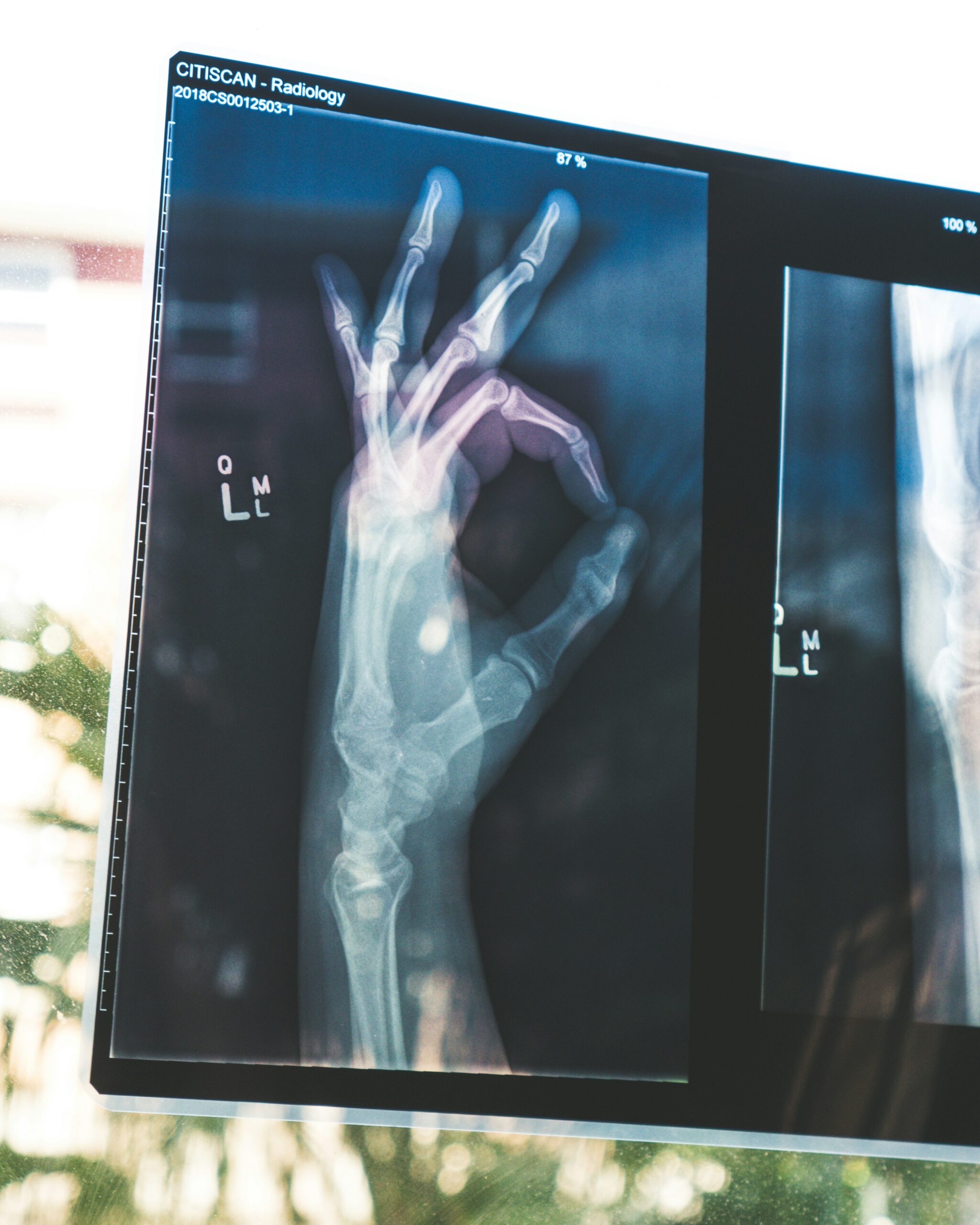Have you ever wondered what an enlarged prostate feels like? It's a common concern for many men, but deciphering the sensations can be confusing and worrisome. In this article, we will explore the various symptoms and experiences that accompany an enlarged prostate, providing you with a better understanding of what to expect and how to take care of your prostate health. So, if you're curious to learn more about this condition and its effects, keep reading!

Understanding Enlarged Prostate
Enlarged prostate, also known as benign prostatic hyperplasia (BPH), refers to the enlargement of the prostate gland in men. The prostate gland, which is located just below the bladder, surrounds the urethra, the tube that carries urine from the bladder out of the body. When the prostate becomes enlarged, it can cause a variety of symptoms and complications. It is important to understand the causes, symptoms, and treatment options for an enlarged prostate, as well as how it differs from prostate cancer.
Definition of Enlarged Prostate
An enlarged prostate occurs when the prostate gland grows in size, often due to age-related changes in hormone levels. As men age, the levels of the hormone dihydrotestosterone (DHT) can increase, leading to the growth of prostate cells. This growth can cause the prostate gland to press against the urethra, partially blocking the flow of urine.
Common Causes of an Enlarged Prostate
While the exact cause of an enlarged prostate is unknown, several factors may contribute to its development. Age is the most common risk factor, with the majority of men over the age of 50 experiencing some degree of prostate enlargement. Hormonal imbalances, particularly an increase in DHT levels, can also play a role. Other factors, such as family history, obesity, and certain medications, may also increase the risk of developing an enlarged prostate.
Enlarged Prostate vs Prostate Cancer: Know the Difference
It is important to differentiate between an enlarged prostate and prostate cancer, as they have distinct characteristics and treatment approaches. An enlarged prostate is a benign condition and does not increase the risk of developing prostate cancer. However, the two conditions can coexist, making it essential to undergo regular screenings for prostate cancer. Prostate cancer involves the abnormal growth of cells in the prostate and can have different symptoms and treatment options than an enlarged prostate.

Symptoms of an Enlarged Prostate
The symptoms of an enlarged prostate can vary from person to person, but they generally fall into two categories: physical symptoms and non-physical symptoms.
Physical Symptoms
Physical symptoms of an enlarged prostate primarily involve the urinary system. One common symptom is urinary discomfort and frequency, characterized by a persistent urge to urinate, difficulty starting and stopping urination, and a weak urine stream. Another physical symptom is the feeling of incomplete bladder emptying, where you may feel as though you haven't fully emptied your bladder after urinating. Additionally, pain or discomfort in the lower body, specifically the lower abdomen, groin, or lower back, can be experienced.
Non-Physical Symptoms
Non-physical symptoms of an enlarged prostate can have a significant impact on a person's quality of life. One common non-physical symptom is frequent nighttime urination, also known as nocturia. This can disrupt sleep and lead to fatigue and daytime drowsiness. An enlarged prostate can also have effects on sexual function, such as erectile dysfunction or decreased libido. Lastly, psychological effects, including anxiety, depression, and frustration, may result from the physical and non-physical symptoms of an enlarged prostate.
When Symptoms Indicate an Emergency
While many symptoms of an enlarged prostate can be manageable, there are situations where immediate medical attention is necessary. If you experience sudden and severe urinary retention, the inability to urinate despite feeling the urge, it may indicate a medical emergency. This condition requires prompt intervention to prevent further complications.
Physical Experiences of an Enlarged Prostate
The physical experiences of an enlarged prostate primarily revolve around urinary discomfort and changes in urinary patterns.
Urinary Discomfort and Frequency
Urinary discomfort and frequency are common physical experiences associated with an enlarged prostate. The pressure of an enlarged prostate on the urethra can lead to a persistent urge to urinate, even when the bladder is not full. This can be accompanied by a weak urine stream, difficulty starting and stopping urination, and a feeling of incomplete emptying. These symptoms can be frustrating and disruptive to daily life.
Feeling of Incomplete Bladder Emptying
A feeling of incomplete bladder emptying is another physical experience associated with an enlarged prostate. Despite urinating, you may still feel as though your bladder is not completely empty. This can cause discomfort and a constant need to urinate, even immediately after emptying your bladder. This sensation can be distressing and may require lifestyle adjustments to manage.
Pain in the Lower Body
Pain or discomfort in the lower body is another physical experience that can accompany an enlarged prostate. The pressure exerted by an enlarged prostate can cause pain in the lower abdomen, groin, or lower back. This pain can range from mild to severe and may interfere with daily activities and mobility. It is important to communicate any pain or discomfort to your healthcare provider for proper management.

Non-Physical Experiences of an Enlarged Prostate
In addition to physical symptoms, an enlarged prostate can also affect non-physical aspects of a person's life, including sexual function and psychological well-being.
Frequent Nighttime Urination (Nocturia)
Frequent nighttime urination, also known as nocturia, is a non-physical experience that can significantly impact sleep quality and overall well-being. With an enlarged prostate, the bladder may not be able to hold as much urine, resulting in increased trips to the bathroom at night. This can disrupt sleep patterns, leading to fatigue, daytime drowsiness, decreased productivity, and diminished quality of life.
Impacts on Sexual Function
An enlarged prostate can have negative effects on sexual function. Erectile dysfunction, the inability to achieve or maintain an erection sufficient for sexual intercourse, has been associated with prostate enlargement. Reduced libido, or decreased interest in sexual activity, can also occur. These changes in sexual function can be distressing and may require open communication with a healthcare provider to explore potential treatment options.
Psychological Effects
The physical and non-physical symptoms of an enlarged prostate can take a toll on a person's psychological well-being. Living with the discomfort, urinary issues, and potential sexual changes can lead to increased levels of anxiety, depression, frustration, and decreased self-esteem. It is important to seek support from healthcare professionals, loved ones, or support groups to address these emotional challenges and develop coping strategies.
Complications from an Enlarged Prostate
If left untreated, an enlarged prostate can lead to various complications that can impact your urinary tract and overall health.
Urinary Tract Infections (UTIs)
Obstruction of urine flow due to an enlarged prostate can increase the risk of urinary tract infections (UTIs) by allowing bacteria to multiply in the urinary tract. Symptoms of a UTI may include pain or burning during urination, increased frequency of urination, and cloudy or bloody urine. Prompt treatment of UTIs is essential to prevent further complications such as kidney infections.
Acute Urinary Retention
In some cases, an enlarged prostate can result in acute urinary retention, a condition in which you are unable to urinate despite feeling the urge to do so. This can be a medical emergency, requiring immediate medical intervention to relieve the obstruction and facilitate urination. If you experience acute urinary retention, it is crucial to seek urgent medical attention to prevent bladder damage and other complications.
Kidney Damage
Severe cases of an enlarged prostate can lead to kidney damage. The obstruction caused by an enlarged prostate can prevent urine from flowing out of the bladder and into the ureters, the tubes that connect the bladder to the kidneys. This backup of urine can cause pressure to build up in the kidneys, leading to potential kidney damage or kidney failure. Monitoring kidney function is crucial for individuals with an enlarged prostate.
Diagnosis of an Enlarged Prostate
To diagnose an enlarged prostate, a healthcare provider will perform a thorough medical history and physical examination, often including additional tests.
Medical History and Physical Examination
During the medical history and physical examination, your healthcare provider will ask about your symptoms, medical history, and any risk factors for prostate conditions. They may also perform a digital rectal examination (DRE) to assess the size and condition of the prostate gland. The DRE involves the insertion of a gloved finger into the rectum to feel the prostate gland.
Prostate-Specific Antigen (PSA) Test
The prostate-specific antigen (PSA) test is a blood test that measures the level of PSA, a protein produced by the prostate gland. Elevated PSA levels can indicate prostate conditions such as an enlarged prostate or prostate cancer. However, the PSA test is not specific to any one condition and may require further testing to confirm a diagnosis.
Digital Rectal Exam (DRE)
The digital rectal exam (DRE) is a physical examination performed by a healthcare provider to evaluate the size, shape, and condition of the prostate gland. During this exam, a gloved finger is inserted into the rectum to feel the prostate gland, checking for any abnormalities, such as enlargement or irregularities. The DRE is a quick and relatively non-invasive procedure.
Treatment Options for Enlarged Prostate
Treatment options for an enlarged prostate depend on the severity of symptoms, the impact on daily life, and individual preferences.
Medications
Medications are often the first line of treatment for an enlarged prostate. These medications may help relieve symptoms and reduce the size of the prostate gland. Common medications include alpha blockers, which relax the muscles around the prostate and bladder neck, and 5-alpha reductase inhibitors, which block the production of DHT. Combination therapy with both types of medications may also be used.
Surgery Options
For more severe cases or when medications are not effective, surgical interventions may be recommended. Transurethral resection of the prostate (TURP) is a common surgical procedure that involves removing the excess prostate tissue through the urethra. Other surgical options include laser surgery, prostatectomy (complete removal of the prostate gland), and minimally invasive procedures such as microwave therapy or prostatic stents.
Lifestyle Changes and Home Remedies
In addition to medical treatments, certain lifestyle changes and home remedies can help manage the symptoms of an enlarged prostate. These may include limiting fluid intake before bedtime to reduce nighttime urination, avoiding caffeine and alcohol that can irritate the bladder, practicing pelvic floor exercises to strengthen the muscles supporting the bladder, and using the bathroom at regular intervals to avoid holding urine for long periods.
Role of Diet and Lifestyle in Management
Diet and lifestyle choices can significantly impact the management of an enlarged prostate.
Beneficial Foods and Dietary Habits
A diet rich in fruits, vegetables, whole grains, lean protein, and healthy fats can support prostate health and overall well-being. Specific foods that may benefit individuals with an enlarged prostate include tomatoes, which contain lycopene, a phytochemical with potential prostate-protective properties, as well as green tea, soy, and foods rich in omega-3 fatty acids. Additionally, maintaining a healthy weight and avoiding excessive consumption of red meat and processed foods can be beneficial.
Exercise and its Impact on Prostate Health
Regular physical activity has been associated with a reduced risk of prostate conditions, including an enlarged prostate. Engaging in exercises such as brisk walking, jogging, swimming, or cycling can help maintain a healthy weight, improve urinary symptoms, and enhance overall prostate health. It is important to consult with a healthcare provider before starting any exercise regimen, particularly if there are existing health conditions or concerns.
Adverse Lifestyle Choices to Avoid
Some lifestyle choices can exacerbate the symptoms of an enlarged prostate and should be avoided. These include consuming excessive amounts of caffeine and alcohol, which can irritate the bladder and worsen urinary symptoms. Smoking, a habit known to be detrimental to overall health, may also have adverse effects on prostate health. It is essential to consider these lifestyle choices and make necessary adjustments to support prostate health.
Preventive Measures for Prostate Enlargement
While the development of an enlarged prostate may not always be preventable, certain measures can help reduce the risk or delay the onset of symptoms.
Regular Medical Check-Up
Regular medical check-ups and screenings are crucial for early detection and management of prostate conditions. This may involve routine prostate-specific antigen (PSA) testing, digital rectal examinations (DRE), and discussions with healthcare providers about any symptoms or concerns. Regular check-ups allow for proactive management of prostate health and the identification of potential issues before they become more severe.
Healthy Living Practices
Maintaining a healthy lifestyle can contribute to overall well-being and potentially reduce the risk of prostate conditions. This includes eating a balanced diet, engaging in regular physical activity, managing stress, getting sufficient sleep, and avoiding smoking or excessive alcohol consumption. Healthy living practices can support optimal prostate health and potentially delay the onset of an enlarged prostate.
Proactive Management of Risk Factors
Identifying and addressing potential risk factors can help reduce the likelihood of developing an enlarged prostate. For example, maintaining a healthy weight, managing chronic health conditions such as diabetes or high blood pressure, and following a balanced diet can be beneficial. Additionally, discussing family history and individual risk factors with a healthcare provider can guide proactive management strategies.
Living with an Enlarged Prostate
Living with an enlarged prostate can present challenges, but there are strategies to cope with the condition and maintain a high quality of life.
Coping with the Condition
Coping strategies for living with an enlarged prostate can include adopting healthy lifestyle habits, practicing stress management techniques such as meditation or relaxation exercises, and seeking support from healthcare professionals or support groups. It may also help to identify and implement lifestyle modifications or adjustments that can alleviate symptoms and improve overall well-being.
Support Systems and Counseling
Having a strong support system can be invaluable for individuals living with an enlarged prostate. Trusted loved ones, friends, or support groups can provide understanding, encouragement, and a sense of community. Additionally, counseling or therapy can help address any emotional or psychological challenges that arise from the physical and non-physical effects of an enlarged prostate. It is essential to reach out to these resources and not hesitate to seek professional help when needed.
Outlook and Prognosis
With appropriate management and treatment, the outlook for individuals with an enlarged prostate is generally positive. Many treatment options, both medical and lifestyle-based, can help alleviate symptoms and improve quality of life. It is important to work closely with healthcare professionals, follow recommended treatment plans, and actively engage in self-care practices to optimize outcomes and prognosis.
In conclusion, understanding enlarged prostate is essential for individuals experiencing symptoms and seeking appropriate care. By differentiating between an enlarged prostate and prostate cancer, recognizing the physical and non-physical experiences, understanding potential complications, and exploring treatment options, individuals can proactively manage their prostate health and maintain an optimal quality of life. Regular medical check-ups, healthy lifestyle choices, and a supportive network of healthcare professionals and loved ones are key to navigating and coping with an enlarged prostate effectively.

